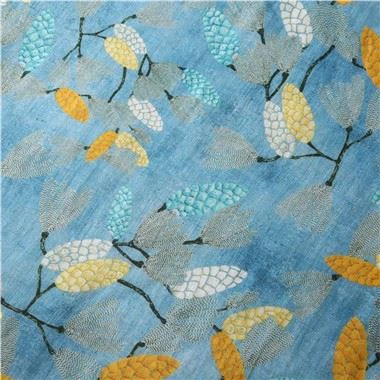What Is The Difference Between Needle-punched Cotton Non-woven Fabric And Regular Non-woven Fabric?
Jun 03, 2025
In the textile and industrial materials sector, non-woven fabric is a familiar term. However, when it comes to needle-punched cotton non-woven fabric, many people may feel confused. Is it the same as regular non-woven fabric? What are the differences? The following content provides an in-depth analysis of the fundamental distinctions between these two materials, helping you quickly understand their characteristics and applications.


Needle-punched cotton non-woven fabric regular non-woven fabric
1. Clarifying the Concept: What is Non-Woven Fabric?
Non-woven fabric is a type of material made without traditional textile processes (e.g., spinning or weaving). Instead, fibers are arranged in a web structure through physical, chemical, or thermal bonding methods.
Common types of non-woven fabrics include:
Spunlace Non-Woven Fabric (Uses high-pressure water jets to entangle fibers. Soft and skin-friendly. Often used in wet wipes and facial masks.)
Thermal Bonded Non-Woven Fabric (Fibers are bonded by heat. Low cost. Commonly used in shopping bags and packaging materials.)
Meltblown Non-Woven Fabric (Ultra-fine fiber structure. Excellent filtration. Serves as the core layer in masks.)
Needle-Punched Non-Woven Fabric (Fibers are reinforced through a needle-punching process. Discussed in detail below.)
2.What is Needle-Punched Cotton Non-Woven Fabric?
Needle-punched cotton non-woven fabric is a specialized type of non-woven fabric, with its core characteristic lying in its production process-needle-punching technology.
Production Process:
Cotton fibers, synthetic fibers (e.g., polyester), or blended fibers are layered into a web. Thousands of barbed needles repeatedly puncture the fiber layers, causing the fibers to entangle and tightly interlock, ultimately forming a sturdy yet fluffy three-dimensional structure.
Key Advantages:
High density, significant thickness, strong abrasion resistance, and customizable properties (e.g., sound absorption, thermal insulation, filtration) by adjusting needle density and fiber types.
3. Needle-Punched Cotton Non-Woven Fabric vs. Regular Non-Woven Fabric: Four Key Differences
|
Comparison Aspect |
Needle-Punched Cotton Non-Woven Fabric |
Regular Non-Woven Fabric (e.g., Thermal/Spunlace) |
|
Production Process |
Mechanical reinforcement via needle-punching |
Thermal bonding / Water-jet entanglement |
|
Structural Feature |
Porous, fluffy, Strong three-dimensional effect |
Smooth surface, uniform texture |
|
Physical Properties |
High tensile strength, wearproof, breathable |
Soft and lightweight, but weaker tear resistance |
|
Typical Uses |
Automotive interiors, sofa filling, filtration |
Wet wipes, medical dressings, packaging bags |
4. How to Choose?
For high strength and durability: Choose needle-punched cotton non-woven fabric.
Examples: Furniture padding, industrial filter felts, acoustic insulation pads.
For lightweight and low cost: Opt for thermal-bonded non-woven fabric.
Examples: Disposable shopping bags, dust covers.
For skin-friendly or high hygiene requirements: Select spunlace non-woven fabric.
Examples: Medical gauze, cosmetic cotton.







